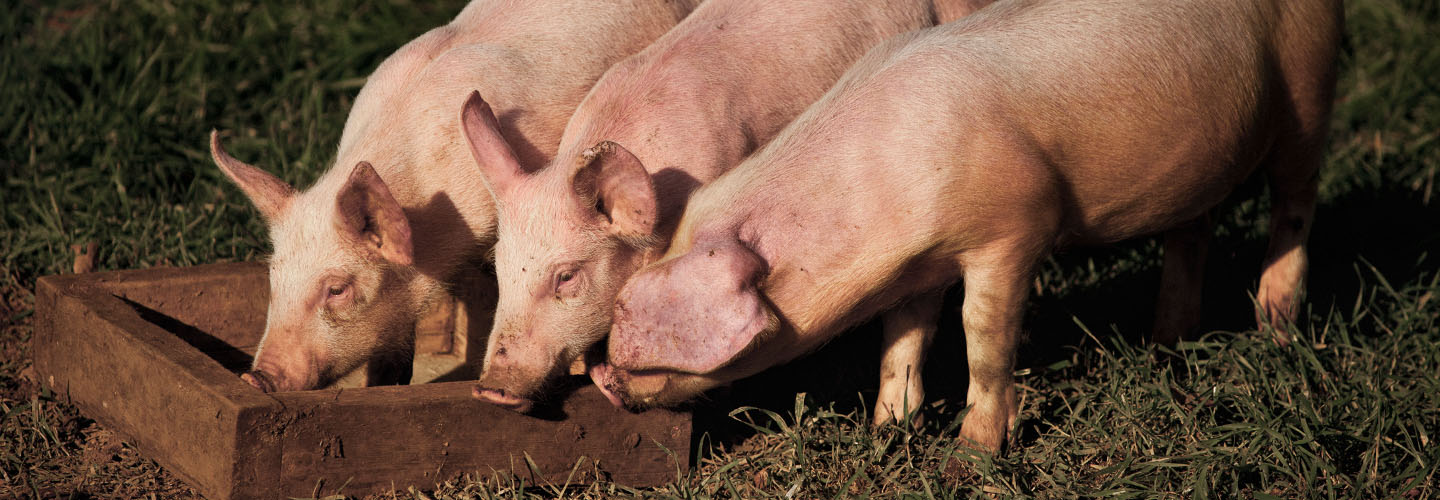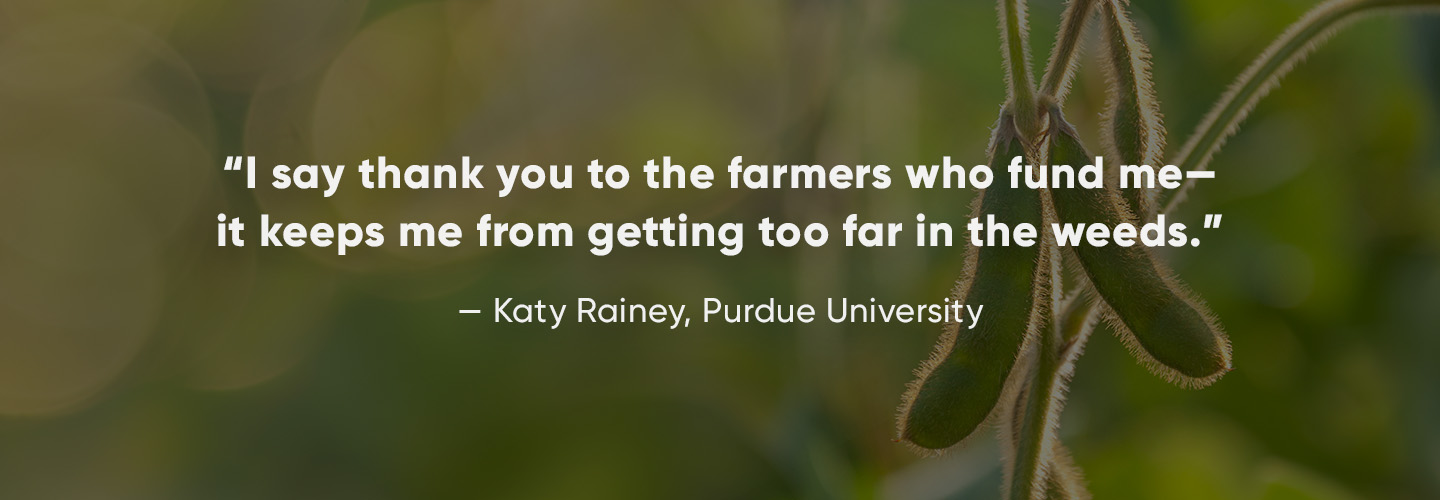How one agronomist’s new software company is raising the bar for agricultural drone imagery.

Katy Rainey’s work relies on diverse perspectives—literally. The Purdue University soybean breeder spends hours walking through fields of crops, tracking their health and abundance. But recently, she’s also spent time observing these same fields from above, as she develops groundbreaking software for monitoring crops via drone photography.
Rainey has been drawn to plants since her childhood in Tennessee, where she grew up in a family with close ties to gardening and farming. After completing an undergraduate degree in botany, she received a Ph.D. at Cornell in plant genetics, merging her lifelong interest in all things rooted in the ground with a newfound passion for genetics and their role in whether plants thrive—or don’t.
Rainey’s curiosity about genetics was driven in part by conversations about GMOs she had during her college years. “I saw a presentation on germplasm collections [commonly known as seed banks] and I thought, ‘Oh, this is so interesting!’” Rainey could see that plant genetics were important, and that the field was growing fast. Without taking a particular stance on the issue, Rainey found the GMO controversy was intrinsically interesting. After all, she chuckles, “young people have a heightened sense of drama!”
Despite the appeal of the GMO debate, Rainey’s interest in agronomics was actually quite practical. She remembers thinking, “The job of plant breeder will never go away!” With about 4.6 billion bushels predicted to be produced in the U.S. this year, soybeans aren’t going away either, making them especially well suited to Rainey’s forward-thinking mindset.
Rainey’s work as a breeder began at Virginia Tech, where she focused on soybeans marketed to East Asia for human consumption. The job had exciting travel perks. “I went on trade missions to Japan and met with tofu manufacturers, to learn about what a great soybean looks like for them,” she says. The work was interesting, but Rainey explains that the portion of the crop marketed in this way is “a tiny part of the market,” and ultimately, she aimed to do something with more impact.
Funding goals
When she moved to Purdue, Rainey’s work took on a broader scope. Since the majority of U.S. soybeans are grown for livestock feed, Rainey is now focusing her breeding efforts on creating healthier diets for pigs and chickens. She works on modifying carbohydrate conversion so that soybeans are digested more efficiently, making it less expensive for farmers to raise healthy, well-fed livestock, which results in less expensive meat.
Since the majority of U.S. soybeans are grown for livestock feed, Rainey is now focusing her breeding efforts on creating healthier diets for pigs and chickens.

Rainey’s work is part of a program funded by the United Soybean Board (USB). This nationwide organization awards research grants each year based on the needs and priorities of the farmers who fund USB through a self-imposed tax. Rainey believes this funding process has a positive influence on her field. “I like doing things that are tangibly valuable,” she notes. “And when you don’t have science funded competitively, people can be less prone to evaluate why they’re doing what they’re doing. I say thank you to the farmers who fund me—it keeps me from getting too far in the weeds.“

Asked to consider the drawbacks of her funding model, Rainey suggests that longer-term funding cycles of five years (as opposed to two or three) might allow her to focus more completely on the work and spend less time pursuing funding. In the end, however, as a researcher in applied sciences, Rainey both understands and appreciates the importance of stakeholder value.
A new application for drones
With so much in-depth knowledge of soybean plants, Rainey understands that “to make improvements to quality, we will have to be able to measure that quality more precisely.” That’s where her new role as an agricultural drone mapping software entrepreneur comes in.
An enormous amount of data is required to evaluate crops, Rainey says, and it can be hard to gather. “Plant breeding is very driven by logistical constraints. The more genetic diversity you collect and evaluate, the more progress you’ll make toward improving yield.” But that information must be gathered over hundreds or even thousands of acres before it can become useful numbers on a screen.
With this in mind, she embarked on the second chapter of her career. In 2013, she was approached by Purdue researcher and Ph.D. candidate Anthony Hearst with a novel concept for measuring crops: agricultural drones. “We were doing this big genetic experiment with soybean plants, determining what genes control yield, with about 5,000 plots,” Rainey recalls. “I thought, if we’re going to do this, I want to get as much data as possible. Let’s fly a drone over it and see what we can get.” The results were so compelling that Rainey felt she had to share them with the world. With that, she and Hearst formed Progeny Drone. The goal: to give breeders the tools to evaluate crops in the field on a large scale, quickly.
Given that crop data is as perishable as the crops themselves, getting fast answers is a benefit to farmers. Progeny works offline, making it possible for breeders to gather data and analyze it in minutes—even if they’re standing knee-deep in a soybean field, 20 minutes from the nearest power outlet.
Rainey returns to her practical roots when she talks about Progeny’s potential. She insists she’s not interested in the hard sell; rather, she says, “This is just really useful, and I think people should know about it!” With so much riding on the simple soybean, the world is bound to take notice.